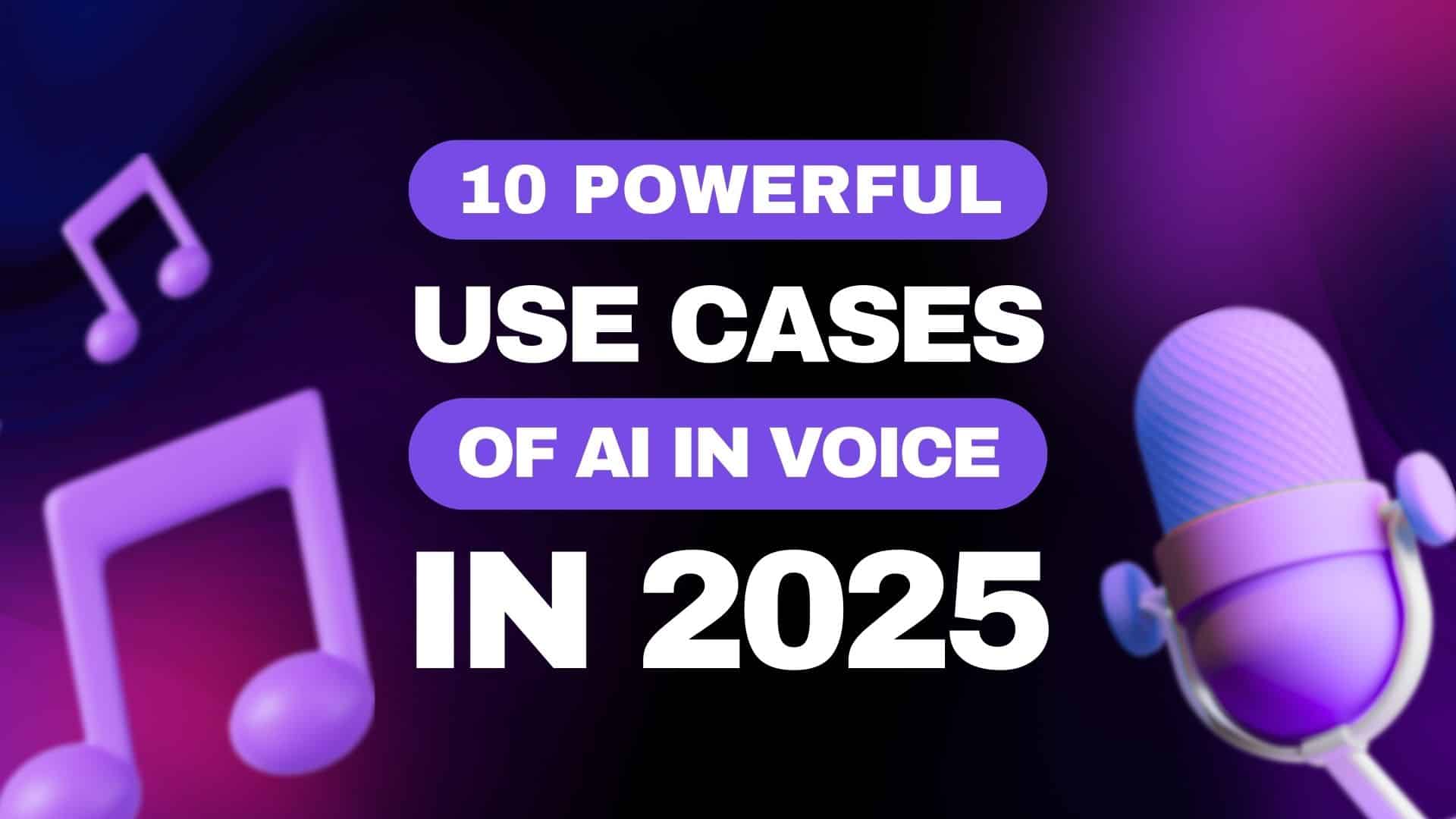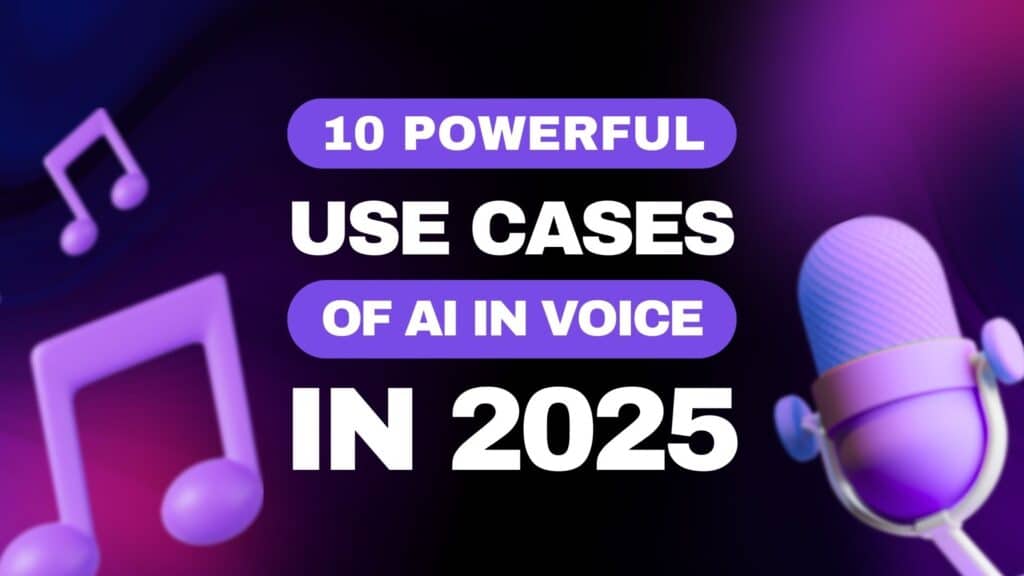

The phrase AI in voice captures one of the most exciting shifts in technology happening today. From personal assistants to music creation, AI in voice is revolutionizing the way people interact with machines, consume content, and connect with each other.
In this article, we’ll explore 10 powerful use cases of AI in voice in 2025, showing how creators, businesses, educators, and musicians are leveraging this technology. Each section highlights practical examples, leading tools, and why this trend is impossible to ignore.
When people think of AI in voice, assistants like Siri, Alexa, and ChatGPT Voice immediately come to mind. In 2025, these assistants have gone far beyond alarms and weather updates.
Now, they function as context-aware companions. They understand routines, anticipate needs, and respond naturally in conversations. With AI in voice, assistants can manage your schedule, control smart homes, or even summarize emails with human-like precision.
For creators, AI in voice tools like ElevenLabs, Murf.ai, and Play.ht provide a game-changing advantage. Instead of spending thousands on professional narrators, creators can produce studio-grade voiceovers in minutes.
These tools support a wide range of tones, languages, and accents—empowering YouTubers, educators, and marketers to connect with global audiences while saving time and money.
Podcasting has exploded, and AI in voice makes it more scalable. Tools like Descript and Resemble AI allow podcasters to automate intros, translate episodes, and even generate synthetic co-hosts.
Meanwhile, ATTN.LIVE pushes the frontier by combining AI in voice with live events and community building. Every spoken word in a live audio event can be automatically transcribed, translated, and distributed—turning voice into a digital asset.
Voice cloning is one of the most advanced applications of AI in voice. With platforms like Resemble AI and Kits.ai, businesses and creators can replicate voices with astonishing accuracy.
Brands are using cloned voices for training, product demos, and personalized greetings, while artists license their voices for new creative projects. In 2025, AI in voice cloning is both a tool for innovation and a spark for ethical debates.
Entertainment and education rely heavily on localization. AI in voice dubbing, powered by Papercup and Deepdub, allows instant translation and synchronization across multiple languages.
Instead of weeks of studio work, content creators can launch shows or courses globally in hours. This makes AI in voice dubbing essential for international reach.
Businesses are rapidly deploying AI in voice bots to handle customer interactions. Solutions like PolyAI and Cognigy can recognize tone, detect frustration, and respond with empathy.
This means customer support no longer feels robotic. Instead, AI in voice creates responsive, multilingual, always-available service without massive costs.
Education platforms like Duolingo Max and ELSA Speak are embedding AI in voice to transform learning.
Students can practice pronunciation with AI tutors, while teachers use AI narration to expand course accessibility. By 2025, AI in voice ensures learning is not only interactive but also globally inclusive.
The gaming world is buzzing with AI in voice innovation. Platforms like Inworld AI allow NPCs to talk with players dynamically, making every encounter unique.
Gamers also use mods and AI voice skins to personalize avatars or roleplay. This proves that AI in voice isn’t just about utility—it’s about creating more immersive and emotional experiences.
Music is one of the most creative frontiers of AI in voice. Tools like Suno and Kits.ai let artists generate entire singing voices, harmonies, and even multilingual versions of songs.
This means indie musicians can access professional-grade vocals without costly studios. With AI in voice for music, the line between producer and vocalist blurs, opening new creative horizons.
Looking ahead, AI in voice is set to deliver real-time translation, hyper-personalization, and immersive live experiences. Imagine a concert where AI instantly dubs lyrics into the listener’s native language.
Platforms like ATTN.LIVE show how AI in voice will blend live engagement, blockchain, and community-building—transforming spoken words into digital assets. At the same time, regulations around deepfakes and copyright will shape how responsibly this technology evolves.

| Tool | Best For | Website |
|---|---|---|
| ElevenLabs | Hyper-realistic cloning | elevenlabs.io |
| Murf.ai | Narrations and content creation | murf.ai |
| Play.ht | Podcasting and voiceovers | play.ht |
| Papercup | Dubbing and localization | papercup.com |
| Resemble AI | Voice cloning APIs | resemble.ai |
| Suno | AI music vocals | suno.ai |
| ATTN.LIVE | Live audio and communities | attn.live |
The landscape of AI in voice has moved far beyond simple digital assistants. From creating synthetic singers with Suno to hosting live, AI-powered community experiences on ATTN.LIVE, the opportunities for creators, educators, businesses, and musicians are vast.
As we’ve explored in the 10 Powerful Use Cases of AI in Voice in 2025, this technology is shaping how humans interact with machines and with each other. It saves time, cuts costs, and opens doors to creativity that were previously impossible. At the same time, responsible use is critical—ethical cloning, transparent AI applications, and compliance with regulations will determine how trusted this technology becomes.
Whether you are a brand seeking global reach, a podcaster looking to scale, or an indie artist experimenting with new sounds, AI in voice is no longer optional—it’s essential. By adopting these tools now, you’re not just keeping up with the future, you’re helping define it.
Q1: What are the 10 powerful use cases of AI in voice in 2025?
They include assistants, voice generators, podcasting, voice cloning, dubbing, customer support, education, gaming, music, and future innovations.
Q2: Why is AI in voice important for content creators?
Because it reduces costs, scales faster, and enables multilingual reach while maintaining quality.
Q3: Can AI in voice replace humans?
Not fully. AI complements human talent, especially in large-scale or repetitive projects.
Q4: Which industries benefit the most from AI in voice?
Media, education, customer service, gaming, marketing, and music.
Q5: Is AI in voice safe and ethical?
Yes—if used responsibly. Cloning without consent is a legal and ethical issue.